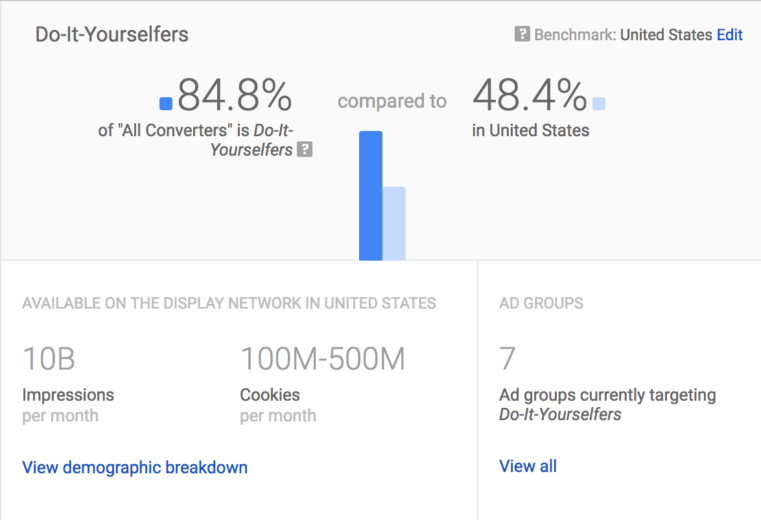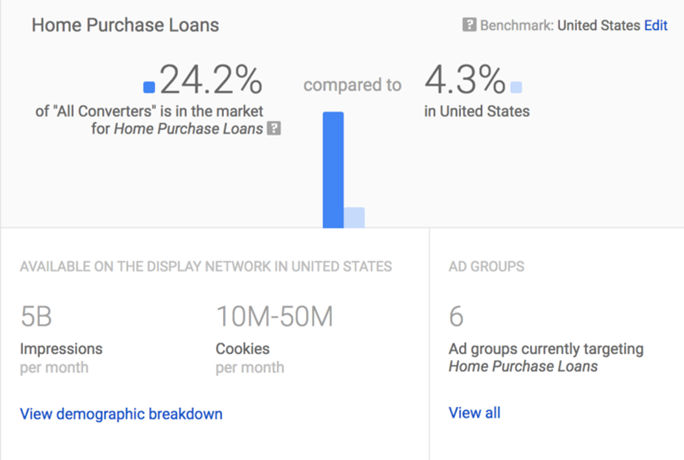When I am working on an account and trying to optimize the campaigns to the fullest potential, I get stuck in a rut of looking at keywords, bids, and budgets. While these are great and essential ways to create efficient spend in your account, you are treating all users the same. Once you open up the Audience Insights report and think about how to segment your audiences, you will learn that this too should be an area where you can tinker and optimize accounts.
Google has been talking about micro-moments for years and how it has changed user behavior. At any given time, I can look up anything I want on my phone when I think about it instead of having to wait until I get to my laptop or desktop. My husband is a huge micro-moment person and I have to constantly remind him we are sharing a data plan now and that looking up everything at a given notice might not be the best thing for our phone bill. Thankfully, his Googling hasn’t caused much marital strife but instead opened up discussions about why we search for books, movies, or Hamilton tickets while we are in that micro-moment.
We no longer go online to get answers or to purchase that Father’s Day present, but instead, we are living online since we reach for our phones to provide the answers when we need them. When diving into data about your audiences, think about how your users are having similar micro-moments and how they interact with your products and clients.
Let’s dive into the audience pools.
Affinity Audiences
Now that we know that we are living online we can conceptualize how other people use the internet. Through Audience Insights, you can find hidden gems about the users that are converting and come up with strategies of how to incorporate this information into affinity audiences or even changing up the ad copy in your ad groups. For example, one of my clients who is an alternate utility company has a larger following of people who like do-it-yourself projects and are passionate about completing difficult tasks by themselves.

To engage with this particular audience we needed to alter the ad copy, with it building off emotion instead of just straight facts. We are selling to the person who goes the extra mile to get things done correctly, making the user see that using your product is the smarter choice. Currently, this type of audience is available on the Google Display Network and YouTube.

If you really love affinity audiences you can go one step further and make custom affinity audiences which will allow you to create an audience that boosts your chances of matching your product or brand with the user. Google breaks down keywords and URLs from advertisers into content themes and then finds users who have recently browsed specific content which is related to these themes.
In-Market Audiences
Since affinity audiences relate to users based on points of passion and consumer habits, it is helpful to have another audience in your account that is actively researching and intending to buy or use your client’s services. Going back to my utility client, when looking at the Audience Insights for all converters we noticed that 24% of these users were also in-market for home loan purchases.

For our client, this makes a lot of sense since recent home buyers are also going to be interested in setting up their utilities as well. We can use bid modifiers when we target this audience since we know they are also in the market for affordable energy sources. You can use this type of audience targeting in the Google Display Network, YouTube, and rumored to be available soon in Search.
Similar Audiences
You have gone through your Insights reports and created newer audiences to target your YouTube and Google Display Network campaigns. You might wonder if there are any other options left. Don’t fear because Google has your back and has created Similar Audiences for you to use in Search, Display, and YouTube. By adding this audience, you make your ad available to users who have shared searches to your current customers. Google makes this audience creation even easier by excluding people who would fall into your remarketing lists so you will not have a bidding war with yourself if you have bid modifiers applied to your audiences.
Customer Match
Now you have exhausted your insights from your reports as well as added new audiences and even let Google create similar audiences. What is left for you to do? You can focus on your current customers by uploading a customer match list. This is a great way to learn more about your customers and potentially cross-sell a different product. This is a strategy we can use for both lead generation and ecommerce clients.
With my utility client, they can now reach their customers through Search and Display to advertise a thermometer that will learn about your temperature habits and help you have a more comfortable home. Before their cross-selling strategy was executed through email and mailers, now we can target and bid for these customers for the client and show another product that could make the customer’s life easier. Also, if you have these audiences running in the background you can learn more about the affinities your users’ have and use that data to optimize your custom audiences and bid accordingly.
Key Learnings
Google is pulling useful data about your users to show repeated patterns of behavior, clear intent signals for when the users are in the market, and create personalized algorithms to get your ad in front of a user who is more likely to need or buy your product. The next time you are trying to optimize your account, look at your converters and glean some insights about what your users want and who your users are. This could help change how you write ad copy or to use bid modifiers to decide which user to show or not to show your ad. Working with audiences can help reach a new audience for your client, but also avoid users who you know are not going to convert. If you find other ways to use Audience Insights, tweet me at @DianeChelius so we can keep the audience discussion going!




